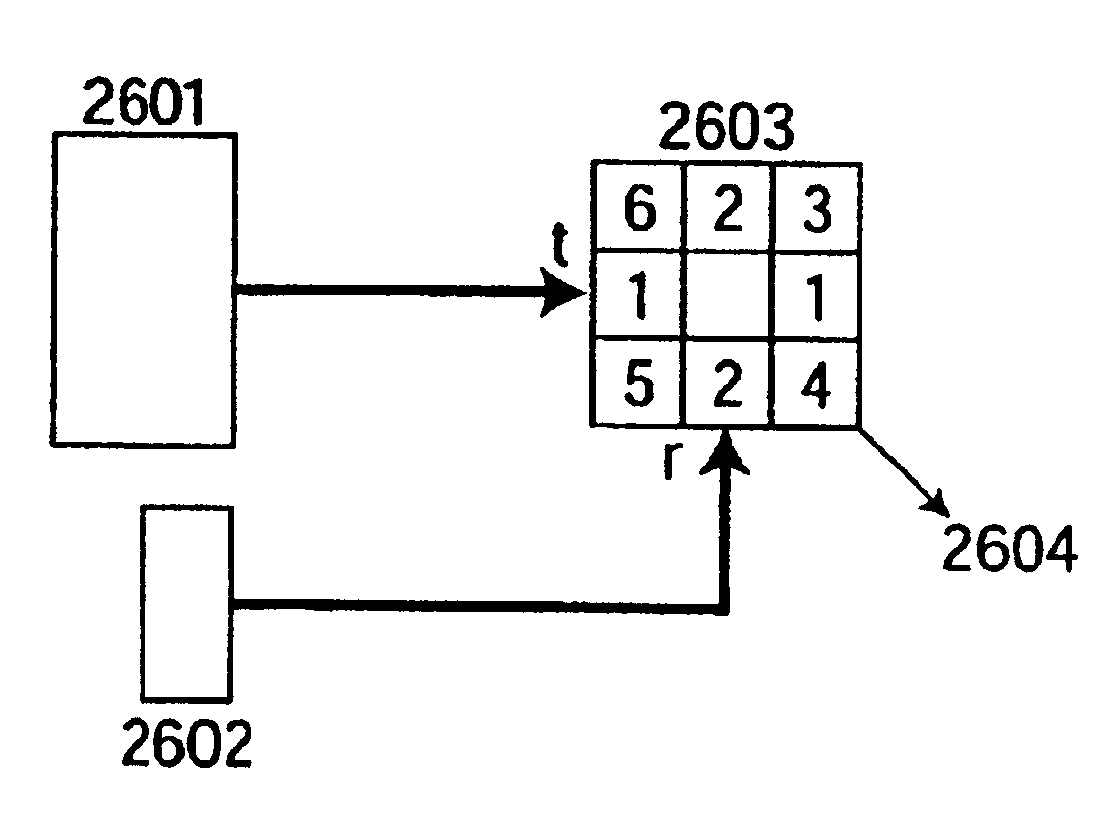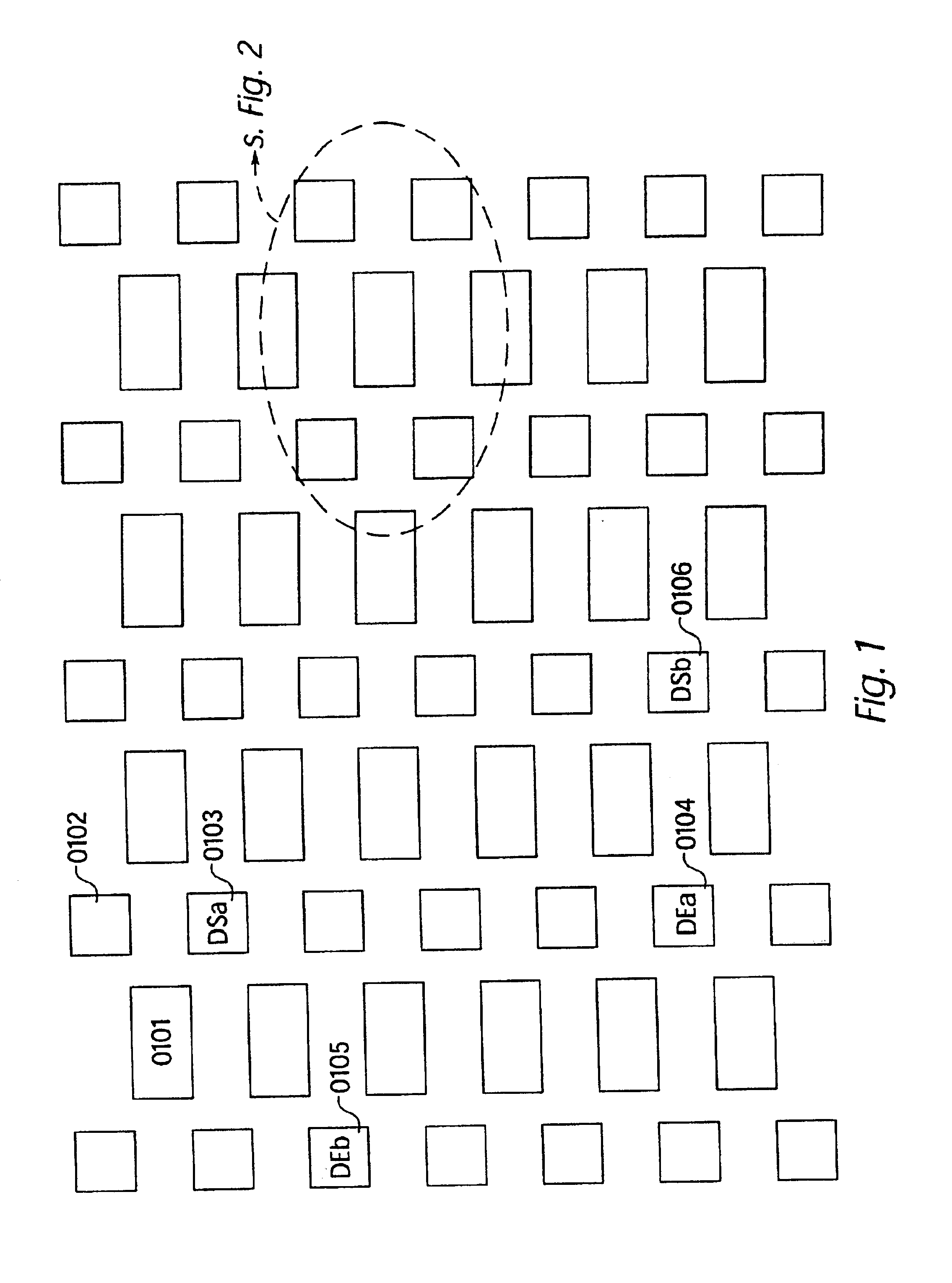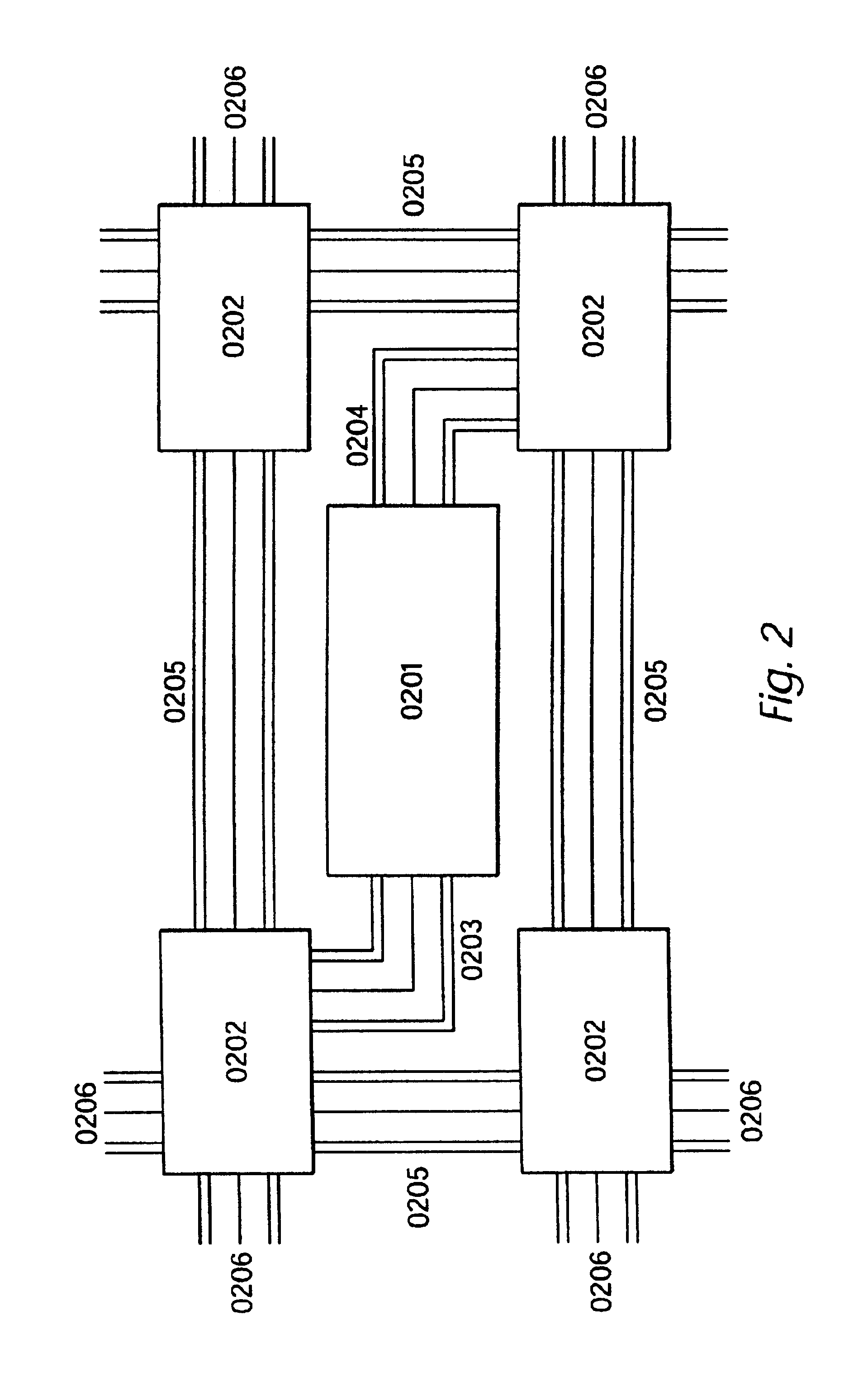Internal bus system for DFPS and units with two- or multi-dimensional programmable cell architectures, for managing large volumes of data with a high interconnection complexity
a technology of programmable cell and interconnection complexity, which is applied in the direction of program control, specific program execution arrangements, and multiple processing units, etc., can solve the problems of high interconnection complexity, limited transmission rate of today's internal buses, and inconvenient bus systems for transmitting large volumes of data
- Summary
- Abstract
- Description
- Claims
- Application Information
AI Technical Summary
Problems solved by technology
Method used
Image
Examples
Embodiment Construction
[0041]A bus system according to the present invention can be integrated on a unit horizontally, vertically, diagonally or in any other position. The bus system is subdivided into a plurality of segments, with the segments being separated by a bus control circuit. This bus control circuit is called a node. At the same time, the node is responsible for routing, i.e., controlling the direction of flow of the data. Logic cells or PAE cells according to German Application No. DE 196 51 075.9-53 are connected to the nodes; they send and receive their data over the nodes, and a target address can be delivered along with each data packet. Likewise the bus system is capable of generating target addresses via look-up tables, referred to as routing tables below; the method described in German Application No. DE 196 54 846.2-53 serves this purpose in particular. The bus systems are especially suitable for direct connection to the INPUT / OUTPUT CELLS described in German Application No. DE 196 54 ...
PUM
 Login to View More
Login to View More Abstract
Description
Claims
Application Information
 Login to View More
Login to View More - R&D
- Intellectual Property
- Life Sciences
- Materials
- Tech Scout
- Unparalleled Data Quality
- Higher Quality Content
- 60% Fewer Hallucinations
Browse by: Latest US Patents, China's latest patents, Technical Efficacy Thesaurus, Application Domain, Technology Topic, Popular Technical Reports.
© 2025 PatSnap. All rights reserved.Legal|Privacy policy|Modern Slavery Act Transparency Statement|Sitemap|About US| Contact US: help@patsnap.com



